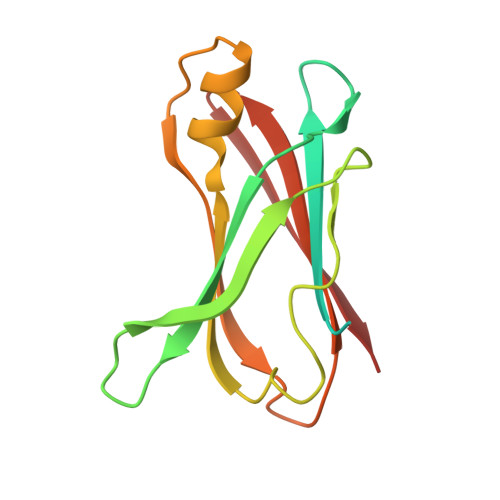Inhibitory activities of anthraquinone and xanthone derivatives against transthyretin amyloidogenesis.
Kitakami, R., Inui, K., Nakagawa, Y., Sawai, Y., Katayama, W., Yokoyama, T., Okada, T., Kanamitsu, K., Nakagawa, S., Toyooka, N., Mizuguchi, M.(2021) Bioorg Med Chem 44: 116292-116292
- PubMed: 34225167
- DOI: https://doi.org/10.1016/j.bmc.2021.116292
- Primary Citation of Related Structures:
7DT3, 7DT5, 7DT6, 7DT8, 7EJQ, 7EJR - PubMed Abstract:
Transthyretin is a tetrameric protein which functions as a transporter of thyroxine and retinol-binding protein. Misfolding and amyloid aggregation of transthyretin are known to cause wild-type and hereditary transthyretin amyloidosis. Stabilization of the transthyretin tetramer by low molecular weight compounds is an efficacious strategy to inhibit the aggregation pathway in the amyloidosis. Here, we investigated the inhibitory activities of anthraquinone and xanthone derivatives against amyloid aggregation, and found that xanthone-2-carboxylic acid with one chlorine or methyl group has strong inhibitory activity comparable with that of diflunisal, which is one of the best known stabilizers of transthyretin. X-ray crystallographic structures of transthyretin in complex with the compounds revealed that the introduction of chlorine, which is buried in a hydrophobic region, is important for the strong inhibitory effect of the stabilizer against amyloidogenesis. An in vitro absorption, distribution, metabolism and elimination (ADME) study and in vivo pharmacokinetic study demonstrated that the compounds have drug-like features, suggesting that they have potential as therapeutic agents to stabilize transthyretin.
Organizational Affiliation:
Graduate School of Medicine and Pharmaceutical Sciences, University of Toyama, Toyama 930-0194, Japan.
















